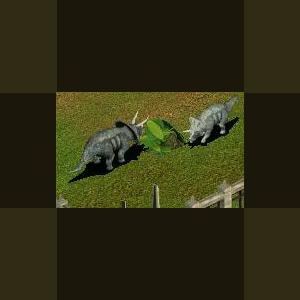About This File
American paleontologist Barnum Brown named Anchiceratops in 1914, as he believed Anchiceratops was a transitional form closely related to both Monoclonius and Triceratops and intermediate between them.
There is one valid species known today (A. ornatus), whose name refers to the ornate margin of its frill. A second species was named A. longirostris by Charles M. Sternberg in 1929, but this species is widely considered a junior synonym of A. ornatus today.
The first remains of Anchiceratops were discovered along the Red Deer River in the Canadian province of Alberta in 1912 by an expedition led by Barnum Brown.The holotype is the back half of a skull, including the long frill,and several other partial skulls were found at the same time, which are now stored in the American Museum of Natural History in New York City. A complete skull was discovered by C.M. Sternberg in 1924, and described as A. longirostris five years later. Another specimen, collected by Sternberg in 1925, lacks the skull but is otherwise the most complete skeleton known from any ceratopsid, preserving a complete spinal column down to the last tail vertebra. Sternberg's material is now housed in the Canadian Museum of Nature in Ottawa. Other material has been found since, including one or two bonebed deposits in Alberta, but very little Anchiceratops material has been described.
Anchiceratops ornatus.Anchiceratops frills are very distinctive. Rectangular in shape, the frill is edged by large epoccipitals (triangular bony projections), and has smaller fenestrae (window-like openings) than those seen in other chasmosaurines like Pentaceratops and Torosaurus.Another characteristic feature is the pair of bony knobs located on either side of the midline, towards the end of the frill.
Most Anchiceratops fossils have been discovered in the Horseshoe Canyon Formation of Alberta, which belongs to the early part of the Maastrichtian stage of the Late Cretaceous Period (74-70 million years ago). Frill fragments found in the early Maastrichtian Almond Formation of Wyoming in the United States resemble Anchiceratops (Farke, 2004). However, pieces of a frill have been found from two localities in the older Dinosaur Park Formation (late Campanian, 78-74 million years ago) with the characteristic pattern of points seen in Anchiceratops frills. This may represent an early record of A. ornatus or possibly a second, related species (Langston, 1959).



Recommended Comments
There are no comments to display.
Create an account or sign in to comment
You need to be a member in order to leave a comment
Create an account
Sign up for a new account in our community. It's easy!
Register a new accountSign in
Already have an account? Sign in here.
Sign In Now